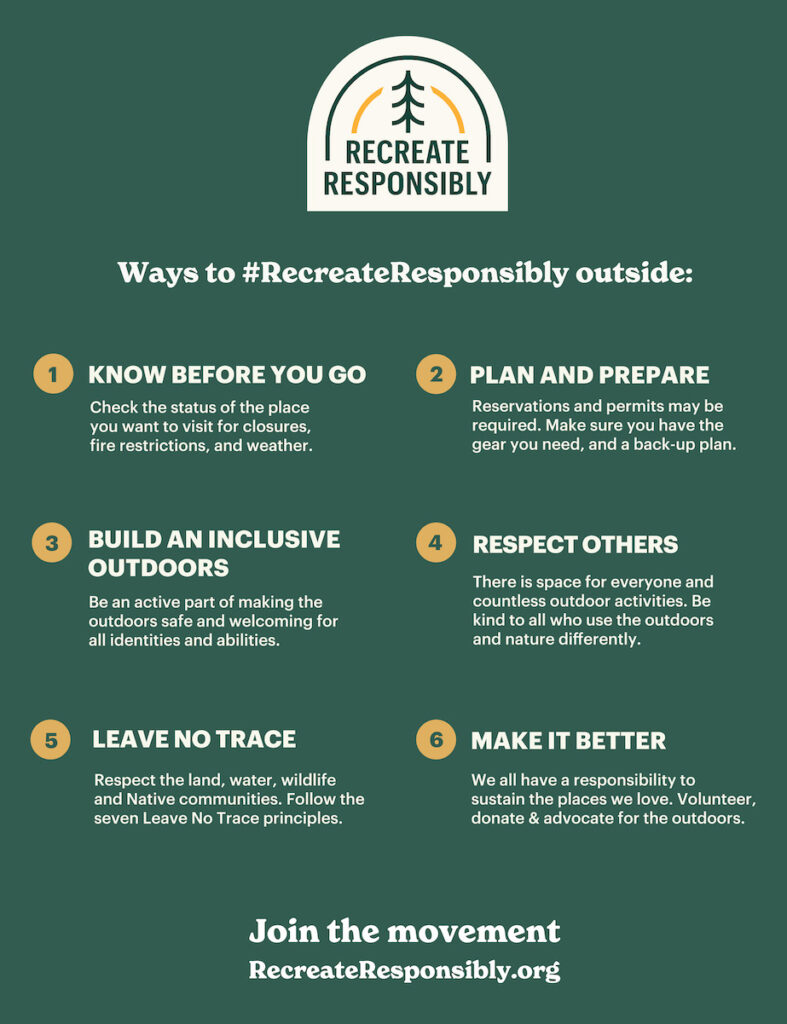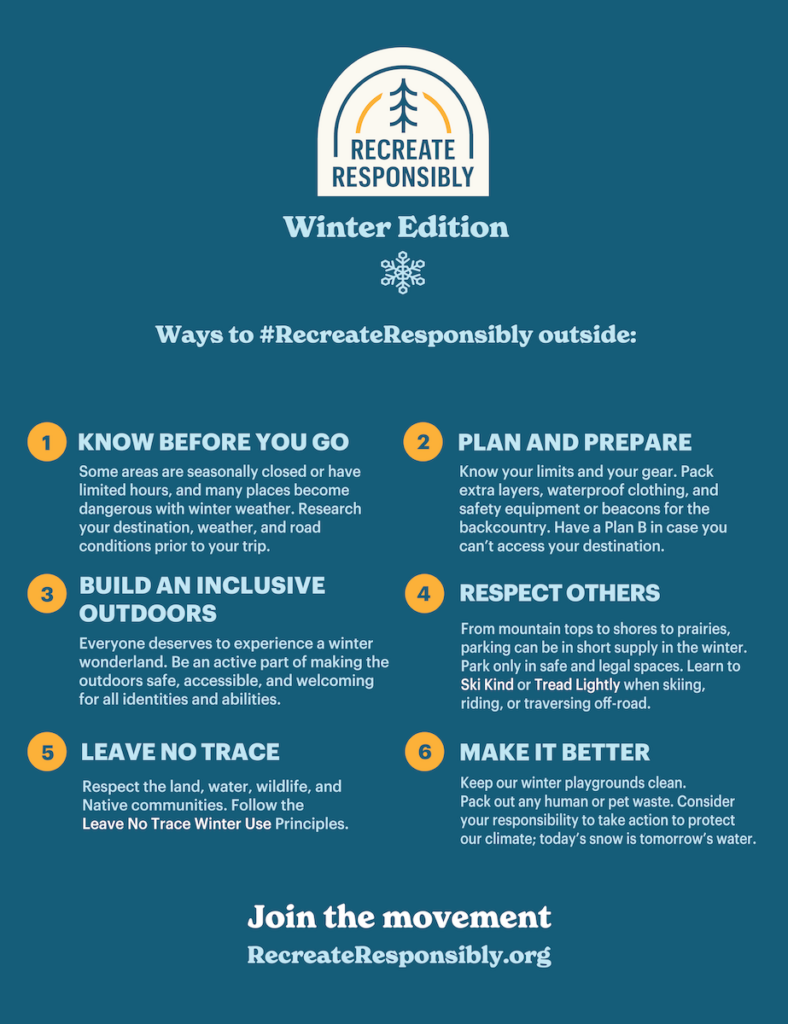Share the Trail
Ohio’s Ohio & Erie Canal Towpath | Photo by Jason Cohn

In America, trails are becoming more popular than ever! People of every age and ability are embracing their favorite pathways to get active, get healthy and get where they need to go—in their communities and across the country. Rails-to-Trails Conservancy created the Share the Trail video series with 5:00 Films & Media to help you learn and know the rules. By following these six Golden Rules of trail use—you can help make every trip safe + fun for everyone. Remember, every amazing trail experience begins with you!

Learn how to share the trail with these six trail etiquette rules.
1. Use Safe Speeds
Gauge your speed on the trail. Remember, we’re all in this together!
Trails allow us all to go at our own pace together—walkers, runners, rollers and bikers, horseback riders too—and that’s what makes them so amazing. It’s also why it’s important to check your speed at all times and consider the comfort of others. You never know what’s around the bend. Some cities have recommended or regulated trail speeds; you may want to inquire with your local trail managing orgs. to learn more.
Challenge yourself to make respect and courtesy the two guiding principles of your trail experience! Keep in mind the comfort levels of all trail users—especially the most vulnerable among us (including children, seniors and people with disabilities)—when you’re on the trail.
2 Keep Right, Pass Left
It’s a trifecta: Move on the right, pass on the left, and be heard!
Safety is the highest priority on the trail. If we all follow the same traffic pattern, we are making our moves predictable for each other. Just like road rules, slower traffic should stay to the right (in a comfortable, safe position). Give a friendly warning before you pass a fellow trail user, and always pass to the left. When passing, use a bell or quick verbal warning to alert those in front of you to stay in their lane; this can help you both avoid potential collisions and avoid startling fellow trail users (sometimes we get lost in our thoughts).
Journey on the right side of the trail, and encourage your fellow trail users to do the same. Set a good example by ringing a bell or calling out “On your left!” in a friendly way when passing. Let’s help each other out.
Note: This is the general rule. Some trails have special areas or traffic patterns for certain users. Know the rules and regulations of your local trails, and use your best judgment.
3 Standing Still? Stand aside.
Taking a break? Take it off the trail.
Trails make sharing time with friends and family easy and fun. And it’s the little things—those mini breaks, friendly chats or amazing photo ops—that make our experience truly amazing. By standing aside and positioning yourself out of trail traffic flow, you are enabling others to pass by safely, without having to weave around you or make sudden stops. It also shows respect for your fellow trail enthusiasts.
It’s simple! When you decide to take a break, just step off the trail so that trail traffic can flow unhindered. If you have a bike or a stroller, make sure you place them completely off the trail as well. If you’re in a big group, gently remind your friends to do the same. This will help ensure a safe trail experience for others, for you, and for your companions too!
4 Mind Your Pets
Make sure your four-legged friends are great trail ambassadors!
Plan accordingly when you’re taking your favorite furry friend out on the trail.
On a short leash: While not all trails require dogs to be leashed, most do. By keeping your dog on a leash—and close by—you can help ensure both Fido and your fellow trail users are having fun. Keep the leash short so you do not “clothesline” other trail users.
Commanding behavior: Know how your pet reacts to others, and be prepared to manage their energy! The trail is a friendly, welcoming place, and a well-behaved dog fits into that equation quite nicely!
The scoop: It’s always important to pick up after your pet. (Carry a waste disposal bag every time you hit the trail.) Pitch in to keep the trail clean and safe for all.
Happy horses: When approaching people on horseback, tighten up your dog’s leash, and keep him or her close. Have your dog sit and stay while you strike up a conversation with the rider. This lets the rider know that your dog is under control. It’s a small, respectful action, but it makes all the difference for the horses. Step to the downhill side of the trail, and let the horses pass. And when in doubt, the rider can talk you through how to pass the horses with your pet.
5 Be Alert
Stay in tune to your surroundings out on the trail.
Everyone’s trail experience is different. Some like to listen to music; others like to chat with friends; and some like to cruise solo, in silence. It’s all about safe, healthy interaction between you and others. Being alert and predictable allows other trail users to calculate what you’re going to do and act accordingly—and allows you to make good decisions too. This includes knowing who has the right of way, and when to yield. And, by staying alert, you’re showing others that you respect their trail journey!
Being alert means managing your own actions. Always look behind you before changing direction or passing another trail user. If you use headphones, keep the volume low, or leave one ear bud out. Keep your senses in check, and you’ll keep communication with those around you free flowing.
If you see someone that is acting in an oblivious or unpredictable manner (a swerving runner or wobbly rider, for instance), give them a little more space, and vocalize your presence gently. Let them know that you’re coming up behind them and will be passing on their left. By being alert, you’re being a good role model for them too!
Tips for Yielding:
- As a general rule of thumb, “Wheels yield to heels.” This means that bikers and inline skaters should yield to walkers, runners and horseback riders. Slower or more vulnerable trail users should get the right of way.
- Downhill traffic should yield to uphill traffic. And as always, use your best judgment in any and every situation. A little common sense and a helpful serving of courtesy get you a long way on the trail!
- All trail users should give horses the right of way. If you come across a person on horseback, step to the downhill side of the trail, communicate with the rider, and allow the horse to pass (or walk past the horse if the rider instructs you to do so).
- If you’re passing a group of riders, take the same approach. Step to the downhill side of the trail, and keep talking to the riders. If you’re comfortable and the horse is expressing interest, present your hand and let the horse sniff you, and move on. (Of course, check with the rider first to make sure it’s okay.)
6 Know and Follow the Rules
Knowing the rules of your local trail will help you be a more informed trail user, and following those rules will make you a trail hero!
There are some universal best practices to sharing the trail, but each of our 50 states has different rules and regulations. And the same can be said for communities across the country. Some rules are there for our safety and security, while others are there to protect natural areas or native plants. And of course, the permitted uses for public places and spaces varies from community to community.
Knowing the rules of our local trails enables us to be predictable, helps keep the trails clean and welcoming, and enables us all to feel safe and secure when we’re out doing our favorite trail activities.
Some trails have their rules posted at trailheads, parking lots or major intersections. If you can’t find them on the trail, take a peek online. You can always ask your fellow trail users and see if the trail in question has any guidelines that you should know about.
Recreate Responsibly
Help the #RecreateResponsibly guidelines reach far and wide. Share your commitment to #RecreateResponsibly by using the hashtag on social media. Or use the following toolkits to share the guidelines on your individual or organization’s social media channels.

